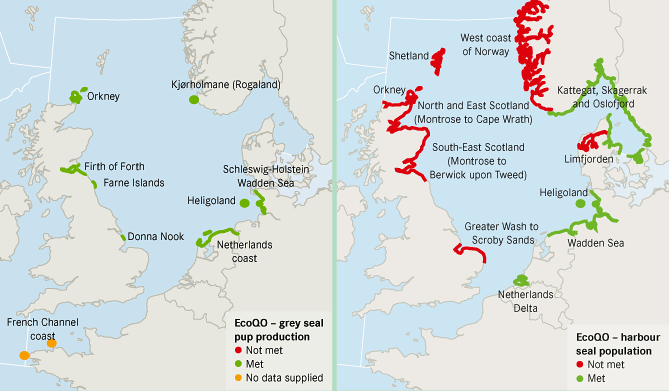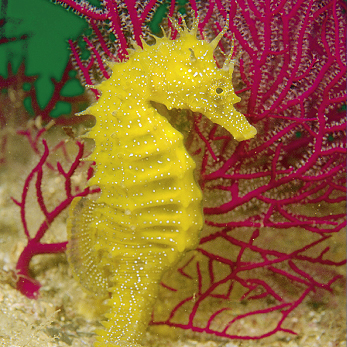North Sea EcoQO: Taking into account natural population dynamics and trends, there should be no decline in pup production of grey seals or harbour seal population size (as measured by numbers hauled out) of ≥10% as represented in a five-year running mean or point estimates (separated by up to five years) within any one of a set of defined sub-units of the North Sea.
Of the five species of seal that occur in the OSPAR area, only the grey seal and the harbour seal are common in the North Sea (Region II). Separate EcoQOs have been adopted for grey seals and harbour seals to account for their differing biological characteristics. Harbour seals breed more widely around the coast than grey seals, which have breeding colonies in specific locations. In recent decades, virus infections led to high mortality among seals. OSPAR’s EcoQO is to maintain healthy populations of these seal species in the North Sea by triggering management action when needed.
In general, recruitment of grey seal pups in the North Sea increased while the population of harbour seals has decreased over the years up to 2006. Based upon the five years up to 2006 the EcoQO was met for grey seals for all significant units of the North Sea population (see map left). Over the same period, the harbour seal EcoQO was not met in several areas where declines of seals of more than 10% occurred (Shetland, Orkney, east of Scotland, Greater Wash to Scroby Sands, Limfjorden in Denmark, and West Norway) (see map right). Of these areas only the Limfjorden area has been affected by an outbreak of the morbillovirus in recent years. In other areas, the cause of the decline is unknown. Data from 2008 suggest that more recently harbour seal populations in the Wadden Sea have been increasing.
This EcoQO acts as a general ecological indicator, because seals are top predators and their status depends on a wide range of variables. The failure to meet the EcoQO for harbour seals needs to be investigated. Changes in population size or pup recruitment might indicate wider problems in the ecosystem, such as depletion of food stocks through fisheries, pollutants affecting reproductive ability or changes in distribution associated with climate change. A combination of pressures may cause physiological stress and increase susceptibility to disease. If the decline is found to be the result of human activities, then suitable management measures must be implemented.


